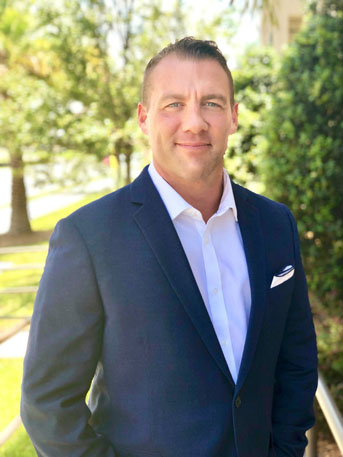Drones make sense, writes Philip O’Sullivan, pictured, founder and Chief Executive Officer of P3. The Florida-based firm offers drones for security and other purposes.
It’s safe to say that most of us have seen video camera footage from drones. Perhaps a budding filmmaker has made an extended aerial tour of your home city, or recorded a birds-eye view of the local abandoned factory. Either way, some of these often spectacular drone videos are big hits on video streaming web sites.
So, the impression some people have about drones is that they are glorified eyes in the sky. And yes, they are useful in that regard. However, many do not realise that they can also hear, feel and analyse in addition to their work as flying cameras.
That’s because drones may be custom-fitted with a wide array of sensing equipment for a great many applications across a range of businesses. These applications include, but are by no means limited to:
– Oil and gas exploration: Electromagnetic sensors can be fitted to a drone in order to collect data on a particular geographic location or locations, collecting invaluable information to companies searching for deposits of natural resources like oil and gas, for example.
– Mapping: Fitted with cutting-edge LiDAR (Light Detection and Ranging) sensor technology, a drone can quickly scan and map topography with an extremely high degree of accuracy.
– Search and rescue: Drones can be flown quickly to affected areas in order to help locate disaster survivors. Also, they are able to deliver payloads of emergency medicine or food to supply the afflicted, or rescue teams on the ground.
– Security: Since drones can see and hear if properly equipped, they are ideal for remote aerial surveillance. High degrees of sensitivity can pick up sights or sounds a human might miss, or misinterpret.
The flexibility, mobility and reach of drones is what makes them such excellent tools for so many processes and functions. And drones are far from one-sensor machines; they have the capacity for many, and these combinations can be used for very specific and technically demanding processes. Given that, it’s no wonder that drones have become a hot corner of technology. No other remote-operated hardware has their level of adaptability. Nor do any possess a drone’s capacity for inspecting and recording vast amounts of data, and doing so with such a high degree of precision and efficiency.
Finally, since drones can see, hear, touch and analyse with enormous sensitivity, their deployment can save vast amounts of resources and money. For example, many classic security services are still performed the old-fashioned way, with a uniformed guard making the rounds of a property. A drone can easily be piloted to perform the same function. Using a drone also removes the risk of injury in this occasionally hazardous-to-humans work.
Since drones can be outfitted for so many types of functions, they have almost an endless variety of business uses. In many cases, work traditionally carried out by humans or machines can be performed far more efficiently – and precisely – with a drone.
Visit P3worldwide.com.










